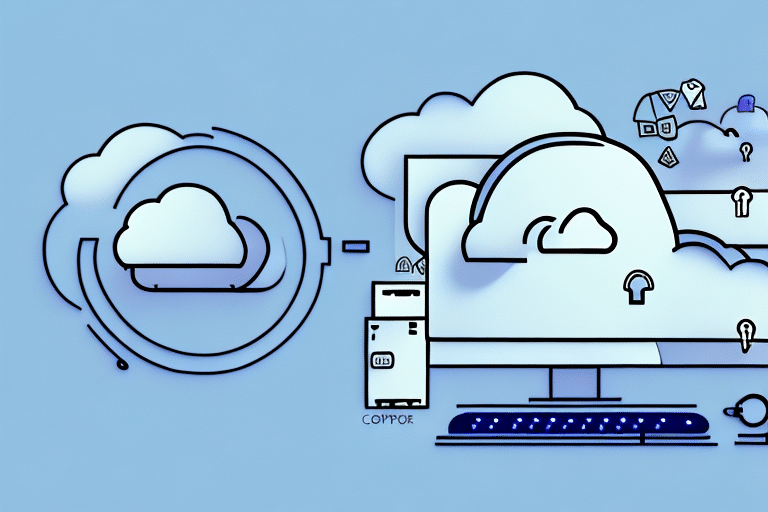The Bring Your Own Device (BYOD) trend has gained significant momentum among businesses looking to boost employee productivity and streamline workflows. The ability for employees to work with their own devices, such as laptops, smartphones, and tablets, can significantly reduce overhead costs for the organization. While the BYOD trend offers numerous benefits, it also poses a significant security risk to enterprise IT operations. Cloud desktops have emerged as a feasible solution for IT teams looking to mitigate risk and enhance security for BYOD environments.
Mitigating Risk and Enhancing Security for BYOD with Cloud Desktops
In today’s business environment, Bring Your Own Device (BYOD) has become increasingly popular, allowing employees to use their personal devices to access company data and applications. While this trend can increase productivity and flexibility, it also creates security challenges. Business data and applications are accessible through unsecured devices, increasing the risk of data breaches and cyberattacks. To mitigate this risk, IT teams deploy security measures such as firewalls and antivirus software. However, this is often not enough to fully protect against sophisticated threats.
Cloud desktops provide added security in such environments by centralizing data storage and enhancing the overall security posture of the organization. By hosting user workspaces in a secure data center rather than on the user’s device, cloud desktops reduce the risk of unauthorized access to sensitive data and applications. Users can access their desktops and applications from any device through a secure connection such as a Virtual Private Network (VPN) or HTTPS.
Cloud desktops also offer advanced security features such as multi-factor authentication to ensure that only authorized users can access sensitive information. This is particularly important in a BYOD environment, where devices may be lost or stolen, and passwords can be easily compromised. With multi-factor authentication, users are required to provide two or more forms of identification, such as a password and a fingerprint, before they can access their desktops and applications.
Another benefit of cloud desktops is that they can be easily managed and updated by the IT team. This ensures that all devices are running the latest software and security patches, reducing the risk of vulnerabilities that can be exploited by cybercriminals. Additionally, cloud desktops can be configured to automatically encrypt data, further enhancing security.
Finally, cloud desktops provide a secure and reliable backup solution for business data. In the event of a device failure or data loss, all data is securely stored in the cloud and can be easily restored to a new device. This ensures that business operations can continue uninterrupted, even in the face of unexpected events.
In conclusion, cloud desktops provide a secure and efficient solution for businesses looking to mitigate the risks associated with BYOD. By centralizing data storage, enhancing security features, and providing reliable backup solutions, cloud desktops offer peace of mind for both IT teams and employees.
The Benefits of BYOD and Cloud Desktops
Bring Your Own Device (BYOD) policies have become increasingly popular in recent years, and for good reason. With BYOD, employees are able to work from anywhere and at any time using their own devices. This means that they can work from home, on the go, or even while traveling. This level of flexibility leads to increased productivity and work satisfaction, as employees are able to work in an environment that suits them best.
But BYOD isn’t just beneficial for employees. IT teams can also benefit from this approach by leveraging cloud desktops to enhance the user experience and provide a consistent environment across different devices and platforms. With cloud desktops, users can access the same desktop and applications from any device, eliminating the need to install and configure software on each device. This leads to reduced IT support costs and increased efficiency, as the IT team no longer needs to spend time installing and configuring software on each individual device.
Cloud desktops also provide the IT team with a central management console to monitor and manage user workspaces. This means that they can easily manage user access, monitor usage, and troubleshoot any issues that arise. With a central management console, the IT team can ensure that all user workspaces are up-to-date and secure, which is especially important in today’s world of remote work and cyber threats.
Another benefit of BYOD and cloud desktops is that they allow for greater collaboration among employees. With the ability to access the same desktop and applications from any device, employees can easily share files and work together on projects, regardless of their location. This level of collaboration can lead to increased innovation and productivity, as employees are able to work together in real-time, even if they are miles apart.
Overall, the benefits of BYOD and cloud desktops are clear. From increased productivity and work satisfaction to reduced IT support costs and greater collaboration, these approaches can help organizations stay competitive in today’s fast-paced and ever-changing business environment.
Zero Trust Virtual Desktop White Paper

How BYOD can actually increase endpoint security
Bring Your Own Device (BYOD) is a growing trend in the workplace, where employees use their own devices to access company data and applications. While BYOD has been known to increase the risk of data breaches, it can also improve endpoint security in a number of ways.
One of the main advantages of BYOD is that employees using their own devices are more likely to ensure that their devices are up to date with the latest security updates and patches. This is because they have a personal investment in keeping their devices secure, as they are used for both personal and professional purposes. As a result, employees are more likely to take responsibility for the security of their devices and follow best practices to keep them secure.
Additionally, BYOD can lead to better adherence to security policies and practices. When employees are allowed to use their own devices, they are more likely to be invested in the security of those devices. This means that they are more likely to follow security policies and guidelines, such as using strong passwords, enabling two-factor authentication, and avoiding risky behaviors like clicking on suspicious links or opening attachments from unknown senders.
IT teams can leverage these advantages by providing secure BYOD policies and guidelines to ensure that employees are aware of their responsibilities in protecting company data. This can include guidelines for securing devices, such as requiring the use of anti-virus software, enforcing encryption, and limiting the installation of third-party apps. It can also include guidelines for safe data handling, such as avoiding public Wi-Fi networks and using secure file transfer protocols.
While BYOD can offer numerous benefits to businesses, it also poses a significant security risk. This is where cloud desktops can provide a feasible solution to mitigate this risk and enhance the overall security posture of the organization. With cloud desktops, IT teams can provide a consistent user experience and centrally manage user workspaces, leading to increased efficiency and reduced costs.
Cloud desktops also offer a secure environment for accessing company data and applications. By keeping data and applications in the cloud, businesses can reduce the risk of data breaches and ensure that sensitive data is not stored on employee devices. This can be particularly important in industries that handle sensitive data, such as healthcare, finance, and government.
In conclusion, BYOD can actually increase endpoint security if managed effectively. By implementing secure BYOD policies and leveraging cloud desktops, businesses can embrace the benefits of BYOD while protecting their sensitive data and applications. With the right policies and tools in place, BYOD can be a win-win for both employees and businesses.


